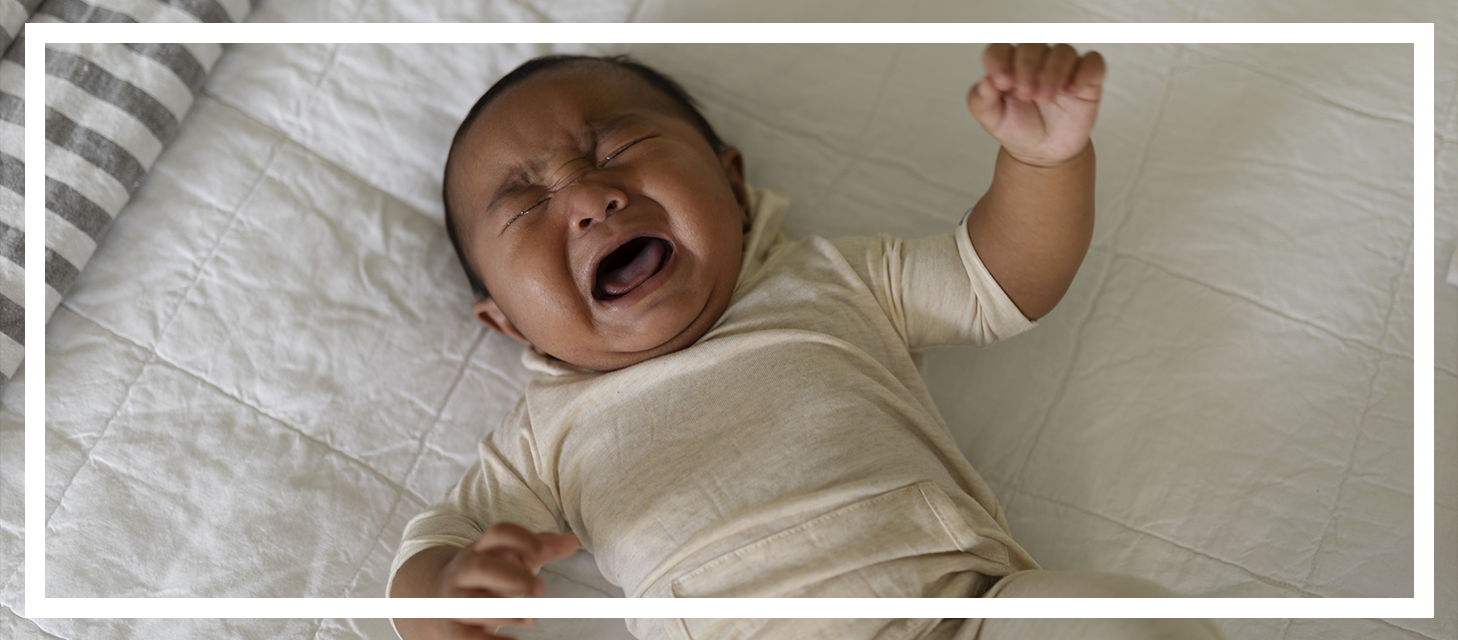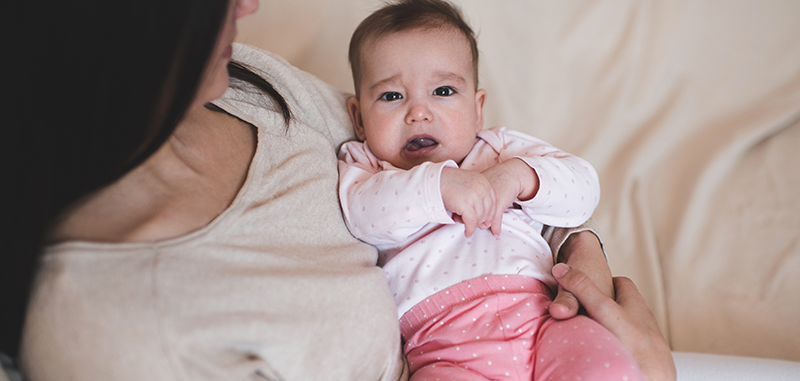Letting Baby Cry It Out: Effective, But At What Cost?

Every parent knows that moment when their baby's cries feel endless. You've tried everything—rocking, lullabies, checking the diaper—but nothing seems to soothe the tears. As frustration builds, so does a sense of helplessness. One question keeps echoing in your mind: "Should I let my baby cry it out?"
It's a debate that often divides opinions. Some believe that letting baby cry it out is essential for teaching self-soothing, while others emphasize the importance of responding promptly to your baby’s needs.
So how do you strike the right balance between nurturing and encouraging independence?
In this article, we’ll explore what science and parenting experts have to say about this controversial method.
You’ll find practical advice and valuable insights to help you better understand your baby’s crying—while also looking after your own peace of mind.
Ready for some clarity? Let’s dive in. 🌟
Baby's Cries: A Universal Language
From the very first hours of life, a baby’s main form of communication is crying.
Contrary to what some may think, crying is never just “acting out” for a newborn—it's an essential expression of needs or discomfort.
Decoding those cries, though sometimes overwhelming, is a crucial step for any parent.
Why Do Babies Cry?
There are many reasons, and each one reflects a specific situation. Here are the most common needs babies express through crying:
- Hunger: One of the most frequent causes—especially for newborns who feed often. These cries escalate quickly if the need isn’t met.
- Overtiredness / Release Crying: Ironically, tired babies may struggle to fall asleep and cry as a way to release tension built up throughout the day.
- Need for comfort: Seeking security, babies often cry to be held or to feel the soothing presence of a parent.
- Physical discomfort: A wet diaper, tight clothing, or an awkward position can quickly lead to tears.
- Pain or illness: Whether it’s colic, reflux, or something more serious, crying accompanied by other symptoms (like a hard belly, fever, or vomiting) calls for extra attention.
The Crying Peak: A Natural Phase
Did you know that crying often peaks between weeks 6 and 8? This phase, known as the “crying peak”, is completely normal and happens with many infants.
During this time, babies may cry up to 2 or 3 hours a day, mostly in the late afternoon or evening. Thankfully, this stage is temporary. Around 3 months, crying usually eases as your baby’s nervous system matures.
Recognizing Different Types of Cries
Not all cries are the same. While it may seem confusing at first, many parents learn to identify subtle differences in their baby’s cries over time.
Thanks to the research of Priscilla Dunstan, it’s now possible to decode five distinct types of baby cries, each tied to a specific need. Here's how to recognize and interpret them:
Hunger ("Neh")
This cry is linked to the sucking reflex. Baby makes a “neh” sound by pushing their tongue against the roof of the mouth. You'll notice wide, alert eyes—unlike the droopy eyelids seen with tiredness.Sleepy ("Aeh")
When baby is ready to sleep, the cry may sound like a soft meow—“aeh”—often paired with a yawn. The mouth forms a small “o,” and half-closed eyes seem to drift off already.Burp ("Eh")
A trapped burp produces a distinct “eh” sound, sometimes with wriggling movements aimed at releasing gas. Helping your baby burp can bring quick relief.Discomfort ("Heh")
When baby feels too hot, too cold, or has a dirty diaper, they’ll often make a panting “heh” sound, usually with fidgety movements.Colic ("Eerrrrhh")
Colic-related crying is intense and painful. The cry is deep and prolonged—“eerrrrhh.” Baby’s fists are clenched, legs stiffened, and facial expressions show clear distress.
Listening carefully to your baby’s cries—and observing their body language like facial expressions and movements—can help you respond more effectively to their needs.
Crying is their primary way of communicating discomfort or unmet needs. At this stage, they simply don’t have the cognitive ability to plan or control the people around them.
Despite the common belief that a baby cries to manipulate or demand attention, crying is actually a deeply ingrained evolutionary mechanism. These sharp, persistent cries are designed to trigger an immediate response from adults.
They serve a vital purpose: drawing the caregiver back to the child. A baby doesn’t just want their parents — they need them to survive and thrive.
In the early years, babies are entirely dependent on adults to meet their basic needs: food, safety, comfort, and emotional regulation. Crying is their most powerful way to signal an urgent need.
Studies have shown that a baby’s cries instinctively activate areas in the adult brain associated with empathy, attention, and caregiving — prompting protective and nurturing responses.
Far from being a flaw or a nuisance, crying is an evolutionary strategy that ensures babies receive timely care and connection.
By responding to your baby’s cries, you’re not encouraging “spoiled” behavior — you’re teaching them they can rely on you, laying the foundation for healthy emotional development and trust.

What’s Behind the “Letting Baby Cry It Out” Method?
Many parents have heard this familiar advice: "Just let them cry — they’ll stop eventually."
This approach is often linked to the "5-10-15" method or Controlled Crying Technique (CCT), which involves letting your baby cry for gradually increasing intervals before offering comfort.
The idea behind this technique is to help the baby learn to self-soothe by limiting immediate parental responses.
At first glance, this may seem effective in reducing night wakings or bedtime struggles. But scientific research raises important concerns: what’s actually happening inside a baby’s brain when they cry without comfort?
A Crying Baby Is a Stressed Baby
When a baby cries, it triggers a stress response in the body. The brain releases stress hormones like cortisol, and a key region called the amygdala — the brain’s emotional and fear center — becomes highly active, as if shouting: “Help me!”
If no one comes to soothe the baby, this state of stress continues.
At this stage, babies have no way to regulate these overwhelming emotions on their own.
Researchers are increasingly concerned about the long-term effects of repeated stress hormone exposure on a developing brain. While it's difficult to measure precisely, experts agree that chronic stress in early childhood may impact the healthy development of key brain areas.
A 2012 study, cited in Héloïse Junier’s book "The Sleep of Young Children", reveals that their body remains in a state of stress — cortisol levels, the stress hormone, stay high!
This silence doesn’t mean peace. In reality, the baby simply gives up on calling for their parents — they’ve learned that no one will come. It’s not self-regulation; it’s resignation.
This response, known as learned helplessness, may have lasting effects. As they grow, children who experience this may struggle to express their needs or cope with stress, having internalized the belief that their actions don’t influence their environment.
When Attachment Is at Risk
A baby cries to call for their parents — not because they want company, but because they need it.
If no one responds to those cries, the baby learns a painful lesson: crying doesn’t bring help. This can weaken their trust in caregivers and damage the attachment bond — the emotional connection that begins to form in the first months of life.
A secure attachment, built when parents consistently respond to their baby’s needs, lays the foundation for healthy relationships and future independence. On the other hand, letting a baby cry it out can contribute to insecure attachment, which may lead to increased anxiety and wariness toward others.
A More Passive, Less Curious Baby
Another possible outcome of letting a baby cry is a reduction in their natural curiosity. According to the theory of learned helplessness developed by Martin Seligman, a child who realizes their actions (like crying) don’t influence their environment may become more passive.
This passivity can limit their desire to explore, engage with people, and in turn, may slow cognitive development.
A baby who feels safe and heard is more confident and ready to explore the world. But a baby left in a prolonged state of stress may withdraw instead.
Letting Baby Cry It Out: A Controversial Method
“Cry it out” techniques, like those described in the study "Behavioral Treatment of Bedtime Problems and Night Wakings in Infants and Young Children" (Mindell et al., 2006), have shown a certain level of effectiveness.
The study found that ignoring a baby’s cries at bedtime can significantly reduce night wakings. This helps explain why many exhausted parents are drawn to these methods in search of more restful nights.
However, this approach doesn’t address the underlying causes of crying. A baby’s night wakings aren’t just “bad habits” to break — they often signal essential needs: hunger, discomfort, a desire for comfort, or anxiety linked to separation.
By not responding to those cries, the issue may persist in silence, as the baby’s stress doesn’t simply disappear.
Recent research also highlights the limitations of these methods. Babies left to cry may stop calling out, but their stress levels — measured by cortisol — remain high. This unexpressed stress may have long-term effects on their emotional development and the quality of their bond with parents.
So while these techniques may appear effective in reducing wake-ups, they don’t address the heart of the matter: understanding and meeting your child’s needs to build a secure, trusting relationship.
Before choosing this path, it’s important to weigh the short-term gains against the potential long-term risks.
For example, if you need to take a shower, you can place your baby nearby in the bathroom so they’re close to you, even if they cry for a short while. These isolated moments of crying won’t negatively affect their development.
What matters most is avoiding prolonged and repeated crying episodes where your baby may feel abandoned. Simply being in the same room — even silently — can be incredibly soothing. Your baby senses that they’re not alone, and that makes all the difference.
It’s not so much the lack of an instant response that’s the issue, but the ongoing feeling of being ignored that can be harmful. In short, the key is balance: meet your baby’s needs while also taking care of yourself.

What to Do If Your Baby Cries a Lot
The first step in calming a crying baby is to identify the reason behind the crying. It’s not random — it’s your baby’s primary way of expressing needs. Here are a few things to check:
- Is your baby hungry? Hunger is one of the most common reasons for crying. If your baby seems to root or feeding time is near, try offering a feed.
- Is your baby uncomfortable? Check for a wet diaper, tight clothing, or anything that might be causing physical discomfort.
- Too hot or too cold? Babies are sensitive to temperature changes. Make sure they’re dressed appropriately for the environment.
- Is your baby overstimulated? Bright lights, loud noises, or too much activity can lead to sensory overload, making it harder to settle. Try moving to a quiet, dimly lit, soothing space.
- Looking for comfort? Sometimes all your baby needs is a cuddle or a gentle voice. Skin-to-skin contact can also help them relax.
Crying as a Stress Release: A Special Kind of Need
Sometimes, despite your best efforts, your baby may continue to cry. These moments could be what’s known as release crying, when your baby is letting go of built-up tension from the day. This type of crying doesn’t signal an immediate need like hunger or discomfort — instead, it helps your baby process stress, especially when cortisol levels (the stress hormone) are high.
In these situations, your role isn’t to stop the crying at all costs, but to stay present and supportive. Hold your baby close, speak softly, rock them gently. Your calm presence provides a safe, loving space for them to move through the moment.
Though difficult to witness, these cries are completely natural — and even beneficial for emotional balance.
By learning to recognize the different types of cries, you’ll be better able to meet your baby’s needs and foster a nurturing environment where they feel heard, soothed, and loved.
Want to learn more about this type of crying? Read our full article here: Newborn Fussy at Night: Understanding and Soothing Evening Crying
This hormone directly calms your baby’s nervous system, lowering stress levels and helping them settle more quickly. Physical touch creates a vital sense of safety for your baby.
Their breathing and heart rate stabilize, their muscles relax, and the bond of trust between you grows stronger.
These quiet, intimate moments aren’t just soothing in the moment — they also play a key role in your baby’s emotional and social development. Every cuddle is so much more than a sweet gesture: it’s a natural remedy for crying and a foundation for lifelong emotional security.
Better to Let Your Baby Cry Than to Shake Them
Parenting is a beautiful journey — but it can also be exhausting, especially when faced with nonstop crying. These moments can really test your patience, and it’s perfectly normal to feel overwhelmed at times. But in those moments of frustration, it’s vital to remember one thing: it’s always better to let your baby cry than risk shaking them.
Shaking a baby, even for a second, can cause Shaken Baby Syndrome. This impulsive act can lead to serious, irreversible brain damage — including lifelong disability or even death. A baby’s head and brain are extremely fragile and vulnerable to such sudden movements.
What to Do When You're Feeling Overwhelmed
- Put your baby in a safe place. Lay them in their crib or another secure spot, and step away for a few minutes. It’s okay to let them cry briefly while you regroup.
- Ask for help. If another adult is available, don’t hesitate to hand things off. Even a short break can make a big difference in how you feel.
- Breathe. Close your eyes, take a few deep breaths, and remind yourself: this tough moment will pass.
Crying can feel overwhelming — but it won’t last forever. Your well-being matters just as much as your baby’s. Taking care of yourself during these moments helps you return calmer and more present.
And remember: asking for help or taking a break is a sign of strength, not weakness. You’re doing your best — and that’s already more than enough. 💛
Discover REMI
THE SMART ALARM CLOCK 😊
REMI and its app bring together everything you need to manage your baby’s sleep!
Its mission? Helping families sleep better — from birth up to age 10.
I bought REMI for my 4-year-old son who didn’t want to sleep alone anymore after his little sister was born. Thanks to the remote wake-up system and bedtime stories I can play from a distance, the issue is completely resolved! I 100% recommend this purchase!






 My Child Won’t Sleep Alone: How to Help Them Gain Independence
My Child Won’t Sleep Alone: How to Help Them Gain Independence
 Letting Baby Cry It Out: Effective, But At What Cost?
Letting Baby Cry It Out: Effective, But At What Cost?
 White noise for baby : a scientific research !
White noise for baby : a scientific research !
 What are the positive effects of napping on memory?
What are the positive effects of napping on memory?
 What Time Should Your Child Go to Bed? The Ideal Bedtime by Age!
What Time Should Your Child Go to Bed? The Ideal Bedtime by Age!